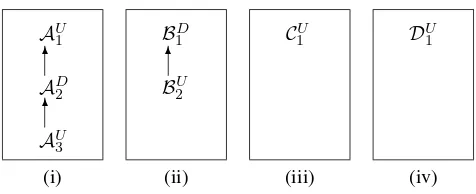A first approach to combining ontologies and defeasible argumentation for the semantic web
Texto completo
Figure

Documento similar
Here, like in other fields, if a philosophical argument presumably shows that there is no deep difference between those cases, that there is no true praise or blameworthi- ness,
On the other hand at Alalakh Level VII and at Mari, which are the sites in the Semitic world with the closest affinities to Minoan Crete, the language used was Old Babylonian,
This backward transition from syntactic blocks to semantic ones can be seen as a reverse engineering approach (see Figure 5), where the main concern is to
Para el estudio de este tipo de singularidades en el problema de Muskat, consideraremos el caso unif´ asico, esto es, un ´ unico fluido en el vac´ıo con µ 1 = ρ 1 = 0.. Grosso modo,
The second system, (reported in[3]), supports semantic search, based on formal domain knowledge, over non-semantic World Wide Web docu- ments. The semantic search system
In [15], a framework to semi-automate the semantic annotation of Web services (i.e. parameter description based on ontology concepts, semantic service classification, etc.)
These technologies include data detector technology to enable any text to become a start point of semantic interaction; annotations for web-based services so
For doing it, we use a new version of the TANGOW (Task-based Adaptive learNer Guidance On the Web) system that allows us to include and adapt collaborative activities in